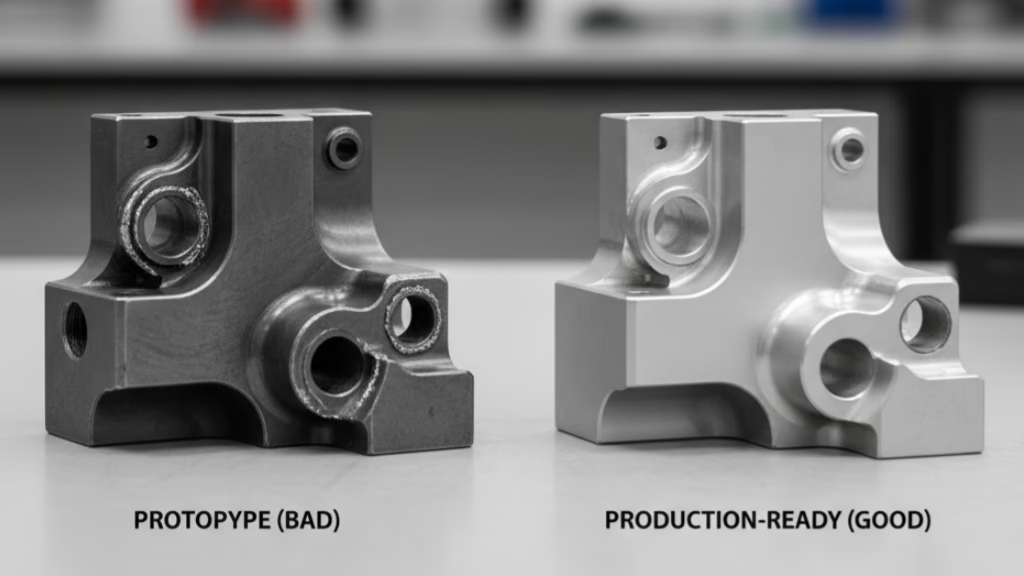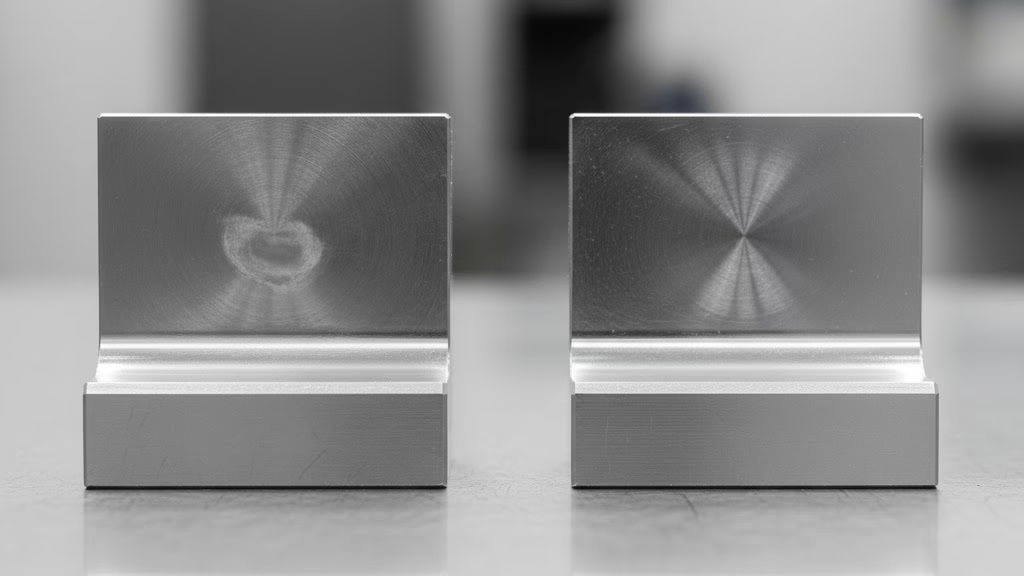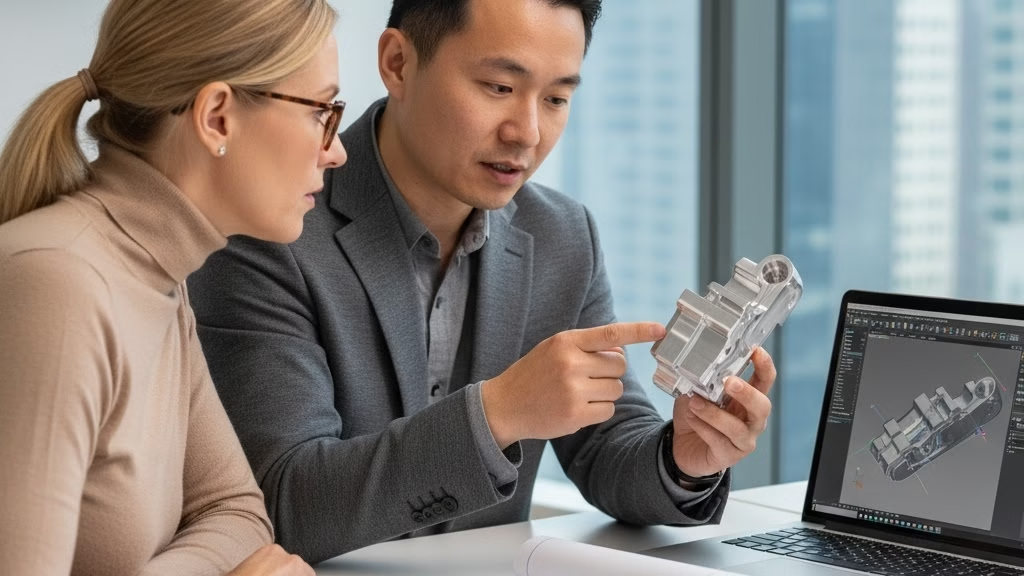You’ve selected Ti-6Al-4V for its incredible strength-to-weight ratio, but you’re also aware of its reputation for being notoriously difficult to machine, a factor captured in its low machinability rating.
This guide provides the actionable data and design-for-manufacturability (DFM) rules you need to transform your CAD model into a flawless, mission-critical component, avoiding the costly pitfalls and production delays.
Machining titanium alloys like Ti-6Al-4V is challenging due to low thermal conductivity, which concentrates heat on the cutting tool, and a low modulus of elasticity, which causes vibration. Successful design requires specific DFM principles: use generous internal radii, control tight tolerances only where critical, and specify machining in the softer annealed state before final heat treatment.
Now you know the fundamentals. But the details—like the specific wall thickness ratios to prevent chatter and the one drawing note that can inflate costs by 30%—are what separate a successful part from an expensive paperweight. Dive in to get the expert insights and real-world case studies that will save you time and money.
Validating Your Material Selection
Before diving into design specifics, it’s crucial to confirm that titanium is the optimal choice.
Your decision likely hinges on its remarkable properties, and our guide comparing high-performance materials clarifies its advantages side-by-side.
| Property | Ti-6Al-4V (Grade 5) | 316 Stainless Steel | 7075-T6 Aluminum |
|---|---|---|---|
| Density | ~4.43 g/cm³ | ~8.00 g/cm³ | ~2.81 g/cm³ |
| Strength-to-Weight Ratio | ~214 kN·m/kg | ~72.5 kN·m/kg | ~203 kN·m/kg |
| Thermal Conductivity | ~6.7 W/m·K | ~16.2 W/m·K | ~130 W/m·K |
As the data shows, Ti-6Al-4V delivers a strength-to-weight ratio comparable to high-performance aluminum but without the significant drop in strength at elevated temperatures.
While 7075 aluminum begins to lose its structural integrity above 120°C, titanium remains stable up to 400°C, making it essential for components near engines or braking systems.
This low thermal conductivity is a double-edged sword—it’s key to the material’s performance in its final application but is also a primary source of its machining difficulty, creating similar challenges in Inconel machining.
Use this quick checklist to confirm your choice:
- Is maximizing the strength-to-weight ratio a critical project requirement?
- Will the component operate in temperatures exceeding 150°C?
- Is superior corrosion resistance or biocompatibility (for medical applications) a necessity?
If you answered yes to these questions, you are on the right track. Now, let’s address how to design for successful manufacturing.
Understanding the Machining Challenges
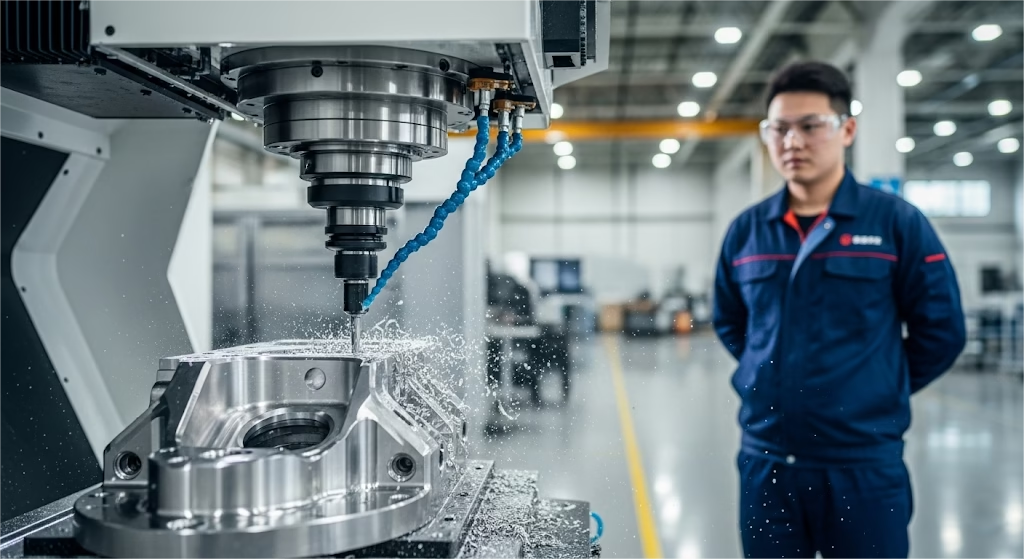
To design effectively for manufacturing, you first need to understand the physical properties that make Ti-6Al-4V so challenging to machine.
It’s not just one thing, but a combination of four distinct characteristics that create a difficult environment for cutting tools and machines.
| Challenge | Primary Cause | Impact on Design & Manufacturing |
|---|---|---|
| Heat Buildup | Low Thermal Conductivity | Rapid tool wear; requires high-pressure coolant. |
| Tool Galling | High Chemical Reactivity | Poor surface finish; needs specific tool coatings. |
| Vibration/Chatter | Low Modulus of Elasticity | Risk of part deflection; requires rigid fixtures and careful toolpaths. |
| Surface Hardening | Work Hardening | Accelerated tool wear; requires constant feed rates. |
First, and most critically, is its low thermal conductivity.
As experts from the cutting tool manufacturer Sandvik Coromant explain, “The primary challenge in machining titanium is its low thermal conductivity. Around 80% of the heat generated during cutting is transferred to the tool, rather than being carried away by the chip.”
This intense heat concentration can rapidly degrade the cutting tool, leading to premature failure and potentially damaging the workpiece itself.
Second, titanium exhibits high chemical reactivity at the high temperatures generated during machining. It has a tendency to weld itself to the cutting tool, a phenomenon known as built-up edge (BUE). This alters the geometry of the tool, leading to poor surface finish and dimensional inaccuracies.
Third is its low modulus of elasticity. With an elastic modulus of around 114 GPa, roughly half that of steel, titanium parts are more prone to deflecting or vibrating under the pressure of the cutting tool.
This “springiness” can cause chatter, which harms the surface finish and can lead to tool breakage. This is especially problematic when designing parts with thin walls or floors.
Finally, Ti-6Al-4V is susceptible to work hardening. If the cutting tool is not advancing into the material at a sufficient rate, it can rub against the surface, causing the localized area to harden.
This makes subsequent passes more difficult, accelerating tool wear and increasing the stress on the part. Understanding these four challenges is the first step toward designing parts that can be manufactured successfully and cost-effectively.
Design for Manufacturability: A Rulebook for Titanium

The most impactful cost and risk reduction for your project happens at your design workstation, long before any material is cut.
By making informed choices that accommodate titanium’s unique properties, you can dramatically improve the outcome. Think of these as the foundational rules for successful titanium part design.
Rule #1: Master Geometry – Think Like a Machinist
Your design’s geometry is the single most significant factor in its manufacturability.
As Dr. Scott Smith, a leading researcher at Oak Ridge National Laboratory, notes, “A common mistake is designing thin floors or tall, thin walls, which act like tuning forks during milling. Increasing the rigidity of the part itself through thoughtful design is more effective than any subsequent machining strategy.”
A common pitfall is placing too much faith in software alone. We once worked on an aerospace bracket that was perfectly optimized in a CAE program—it was lightweight, strong, and looked incredible.
However, it was filled with deep, narrow pockets and 1mm thick walls. The result? The project’s machining time ballooned from a planned 8 hours to over 35, and the final cost was four times the original estimate simply because the geometry was impossible to machine efficiently. This is one of the most common costly DfM mistakes in CNC machining.
To avoid this, focus on these key areas:
- Internal Radii: Avoid sharp internal corners. A corner radius under 1.5mm often requires slower, more fragile tools. A generous radius allows for a more rigid tool, better surface finish, and lower cost.
- Wall & Floor Thickness: As a guideline, a wall’s height should not exceed its thickness by more than 8 to 10 times. Anything more, and you risk vibration and deflection. Our proven CNC wall thickness guide can help you eliminate these failures.
- Holes and Pockets: For any pocket or cavity, aim for a depth that is no more than 4 times its width. This ensures that standard-length tools can reach the bottom and that chips can be cleared effectively. Also, consider how the part will be deburred.
Mastering Complex Geometries?
For parts with intricate curves and multi-sided features, our advanced 5-axis CNC machining services provide the precision and efficiency your design demands.
Rule #2: The Economics of Tolerances
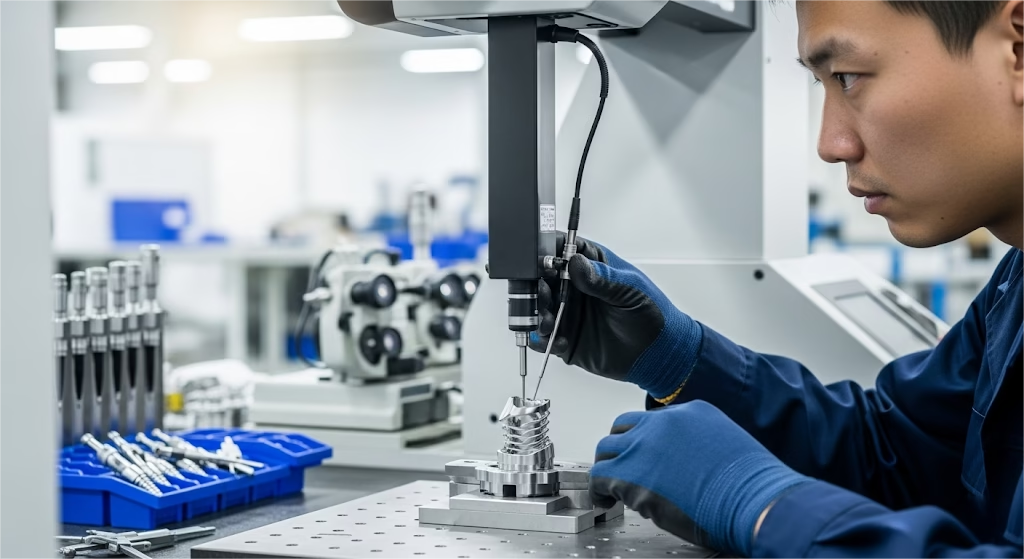
Tolerances have a non-linear impact on cost. While your CAD program can specify tolerances to the micron, achieving them in the physical world requires more than just a capable machine.
Tightening a tolerance from ±0.1mm to ±0.01mm can increase the cost of a feature by 200-400%, as it may necessitate special tooling, slower machining cycles, or precision grinding operations.
We saw this in a medical device project where a simple drawing note, “Break all sharp edges 0.1mm max,” increased the part’s total cost by nearly 30%. The complex internal geometry meant this “simple” task became a time-consuming manual process under a microscope.
Apply tolerances strategically. Use tight controls only on critical functional surfaces and allow for looser tolerances on non-critical features. Clearly modeling these edge breaks or chamfers in your 3D model, rather than leaving it to a generic note, transforms an expensive manual task into an efficient, machine-controlled process.
Rule #3: Material State Matters
It’s a common assumption for a designer to specify “Ti-6Al-4V” on a drawing and consider the material standardized. However, this overlooks a critical detail that significantly impacts manufacturability: the material’s supply condition.
Ti-6Al-4V is typically available in two primary states: Annealed and Solution Treated and Aged (STA).
The Annealed state is softer and more ductile, making it the preferred condition for machining. While still challenging, its properties are more forgiving on cutting tools.
In contrast, the STA state is harder and has higher tensile strength (often 15-20% greater). However, this increased hardness makes machining exponentially more difficult, risking deformation in thin-walled components.
The most effective and cost-efficient strategy is almost always to machine first, then heat treat.
This means you should:
- Specify Annealed Condition for Machining: Design the part to be machined from annealed Ti-6Al-4V.
- Add a Heat Treatment Specification: Include a note on your drawing that calls for the part to be solution treated and aged to the required final specification after machining is complete.
- Account for Minor Distortion: Be aware that heat treatment can cause minor dimensional changes. For ultra-high-precision features, you may need to specify a final light machining or grinding pass after the heat treatment process to bring them into tolerance.
By clearly separating the machining and heat-treating stages in your design specifications, you provide a clear and efficient path for manufacturing, directly reducing risk and controlling costs.
Understanding the Cost & Choosing Your Partner
It’s time to talk about the budget. Let’s be direct: machining titanium is expensive. To put this in perspective, consider a moderately complex part, like a custom aerospace bracket.
If that part costs $250 to machine from 6061 aluminum, you can realistically expect the exact same part made from Ti-6Al-4V to cost anywhere from $1,500 to $2,500.
You are not just paying for machine time and material. You are paying for predictability. A shop specializing in titanium invests heavily in risk management. This “insurance” is built into the cost to guarantee that your mission-critical part will be delivered to specification, without failure. You can learn more in our guide to the true cost of CNC parts.
How to Write a Pro-Level RFQ and Find the Right Partner
The quality of your inquiry directly impacts the quality of the quotes you receive. A professional Request for Quote (RFQ) signals that you are a serious partner and helps manufacturers provide an accurate price. Include the following:
- Clear material specification (Ti-6Al-4V, Grade 5)
- Required heat treatment state (e.g., Annealed or STA)
- 3D models and 2D drawings with all tolerances, surface finishes, and critical features clearly marked
- The final application of the part (e.g., aerospace, medical)
- Expected quantities and project timeline
- Any required certifications (e.g., AS9100, ISO 13485)
Once you start receiving quotes, how do you vet potential suppliers? Here are five essential questions to ask:
- Can you share a case study of a similar titanium part you’ve machined?
- What is your strategy for managing tool life on this part?
- How do you control for deflection on features like these thin walls?
- Is your raw material fully traceable from a reputable mill?
- What is your process for deburring the internal features?
The success of your design depends on early collaboration with manufacturing experts. By treating the process as a partnership, you can leverage their experience to optimize your design for both performance and cost.
If you are ready to turn your demanding design for machining titanium alloys into a reality, the next step is to start a conversation.
Ready to Machine Your High-Performance Titanium Parts?
You’ve designed a part that pushes the limits of performance. Let our experts in hard material machining bring it to life with the precision your project demands.

